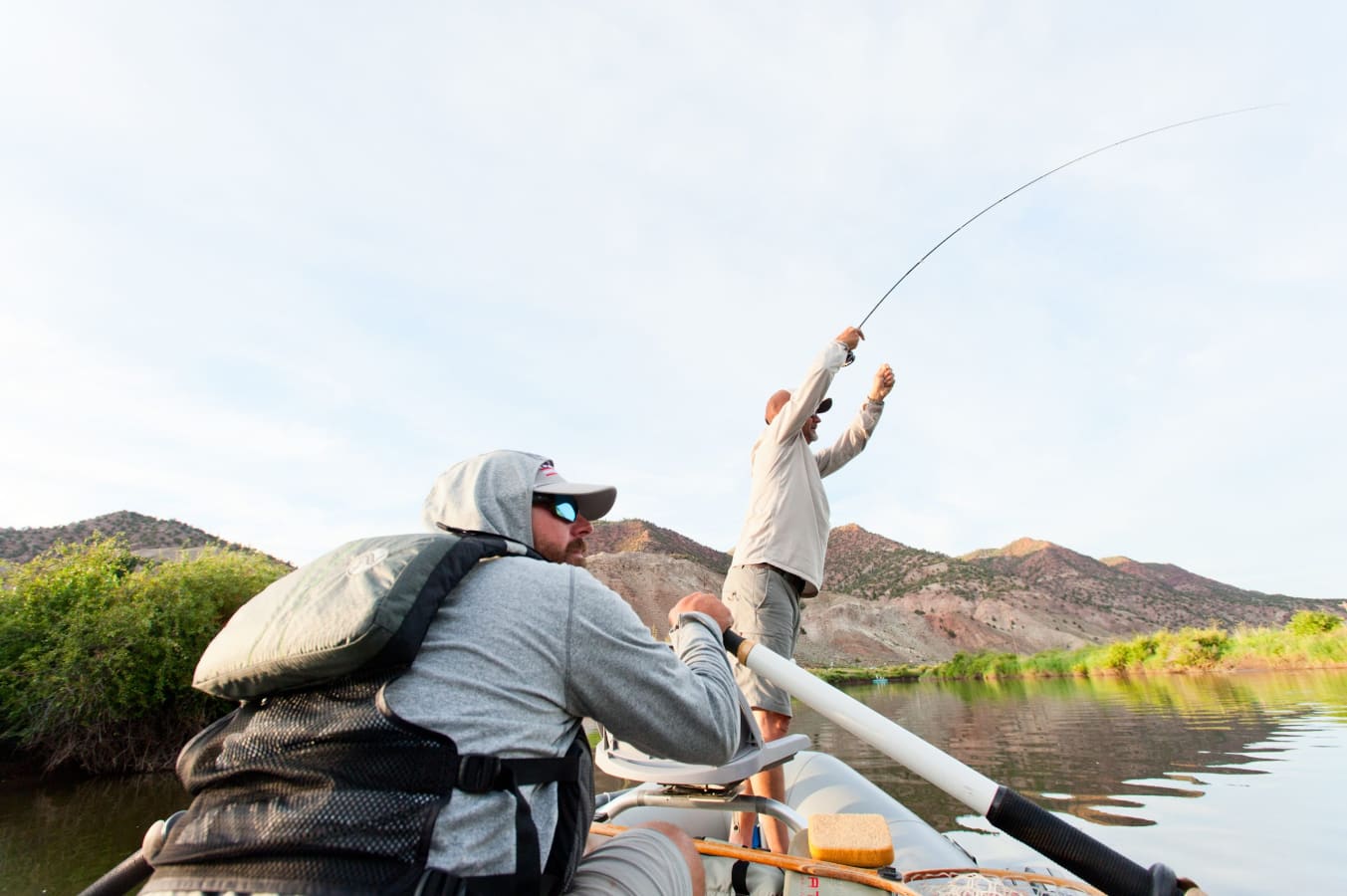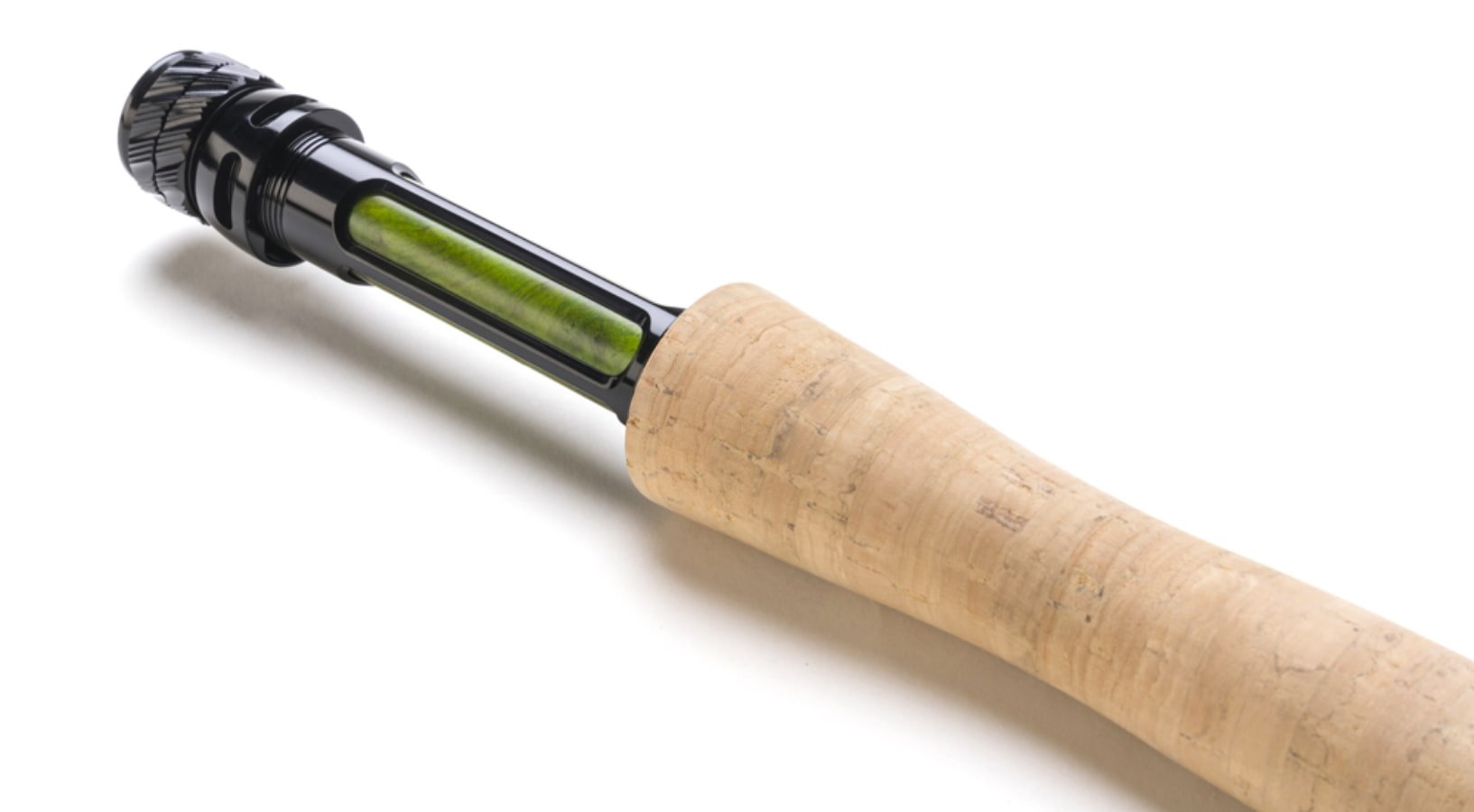Gear Review: Scott Session Fly Rod

Photo: Courtesy of Scott Fly Rods
Before the Scott Session showed up on my doorstep, the only other Scott rod I had fished was a Radian. I loved that rod—even though I never owned one—and I was curious what direction Scott would take with its friendlier-priced Session (it retails for $675). Would the company opt to keep it in that familiar “fast-meets-feel” design family, or branch out to something new?
The Session excellently personifies that marketing tagline. This is a rod with a progressively quick action, yet enough feel in the tip that I fished the 9′ 5-weight during a blue-winged olive hatch, to exceptionally picky fish, without a problem. For some 5-weights, presenting tiny flies with enough delicacy—while also fighting the wind—is a tall task, but the Session delivers.
I had this rod for a couple of months, but put it through a serious workout while on the Green River in Utah for that aforementioned BWO hatch. The bulk of my impressions about the rod were formed then, but I did spend time with it on smaller creeks as well. Let’s take a closer look at what I experienced with the Session.
Fast Meets Feel
This marketing slogan is an accurate way to describe how the Session feels while fishing. I had the 9′ 5-weight model for review, and the rod is definitely quick, but the blank is responsive enough that I never lacked for enough feedback while casting, mending, drifting, or fighting fish. Many rods that are priced below the flagship level aren’t sensitive enough, but that’s not a problem with the Session. $675 is still a significant chunk of change, but it’s more palatable than the $1,100 some companies are asking for these days. In my opinion, the Session is every bit as sensitive as those high-dollar rods.
While it is a fast rod, the Session isn’t as quick as the new Orvis Helios, or Sage R8. I prefer a medium-fast action myself, and the Session is much closer to that category.
That lively action means you’ll be able to generate high line speeds and nice, tight loops. While the Session doesn’t quite have the chops to bust through the worst winds, it’ll hold its own in blustery conditions. I only felt outmatched with it once, and that was one day here in Wyoming where the wind probably topped 30mph. During the gusty BWO hatch on the Green, the Session didn’t falter.
A Delicate Touch
Going along with how well the Session feels in-hand, the rod is delicate enough to handle small dry fly work, even during a hatch like what I fished on the Green. For those who haven’t fished it, the BWO hatch there can be one of the most frustrating angling experiences you’ll ever have. The fish all have PhDs, and the sheer amount of naturals on the water makes it hard to get your bug to stand out.
When you do find those fish rising tight to the bank, or in a narrow seam line, the Session will deliver casts without spooking the fish. I’m a middling caster at best, and I ruin plenty of opportunities at nice fish because I bungle the cast. On the occasion that I made a good cast, the Session rarely performed in a way I didn’t expect.
I’m not saying the Session is some magical rod that makes you an excellent caster; we know a rod like that doesn’t exist. The Session does, however, eliminate enough of the variables with its great taper and soft tip that a competent caster should have no problem getting this rod to perform in the most demanding of dry fly situations.
Accuracy
One of these days I’ll have to get the powers that be here at MidCurrent to invest in an infrared camera to track tip deflection, and thereby add some robust numbers to my claims of accuracy. Until that day comes, however, you’ll just have to trust what I say.
The Session is accurate enough for me. A great caster can probably coax even better performance from this rod, but it has all the ingredients for making accurate casts—it generates high line speed and nice, tight loops. I don’t foresee the average angler having problems using the Session to hit their targets.
Build Quality

I love the green color scheme Scott picked for this rod. It’s unique, and it’ll definitely stand out on a rod rack at your local fly shop. The build quality is typical of Scott, with plenty of hand-crafted touches that make the rod feel personal. The cork is in great shape, the hardware is light but durable, and the rod looks and feels like something that should probably cost a bit more. The blank is Scott’s classic unfinished graphite, which pairs well with the bright green of the reel seat insert. While the Session doesn’t have a top-tier price tag, its build quality certainly is.
A Do-It-All Rod
The Session only has one real downside that I noticed, that’s its swing weight. The rod is light in-hand, but can feel a bit heavy during the cast. It’s not a dealbreaker by any means, but it’s not as light as other rods, either. That minor quibble aside, the rod feels like the perfect option for someone who wants to upgrade from their entry-level Redington, Sage, or Orvis, but doesn’t want to shell out a mortgage payment to do so. This rod shone when fished with a single dry, a dry-dropper rig, or throwing two nymphs under an indicator. I’d pick this as a go-to stick for someone who wants a do-it-all trout rod for your average trout fishing. I was pleasantly surprised at how far I could push the rod and maintain its delicacy and accuracy during that BWO hatch on the Green, so the Session proved it’s capable of handling the most demanding situations I find myself in.
The rod retails for $675, which puts it in the redefined mid-priced tier. It’s a huge step up from anything in the $300-499 range, and it’s head-and-shoulders above almost every other option from $500 – 700.
Invest in your education with Midcurrent’s Learning Center , the perfect compliment to any and all gear!











